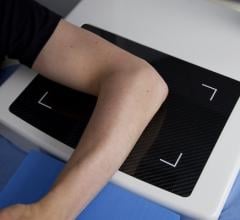
Hospitals everywhere are starting to convert from computed radiography (CR) to digital radiography (DR) in order to achieve better image quality, improved productivity and higher patient output. While DR is infiltrating the radiography market, CR still dominates due to its lower price, portability and flexibility in retrofitting older X-ray equipment. With CR, hospitals can retrofit old X-ray equipment with CR cassettes with no renovation costs. These cassettes allow clinicians to capture images in hard-to-reach angles.
Although DR offers the advantages of improved images, faster results and increased efficiency, many hospitals are reluctant to convert because it would require them to install a new infrastructure to support the technology. Renovating existing operating and emergency rooms is costly — a major reason that hospitals are holding off on DR.
However, several DR manufacturers are focused on cutting costs, increasing portability and making the technology convenient for retrofitting. For example, Carestream has DR plates engineered to be the same size as CR plates for easier conversion.
Memorial Hospital in York, Penn., converted to DR technology and purchased three Carestream products: the DRX-1 system, the DRX-Evolution and the DRX-Mobile Retrofit Kit. Jeff Callendar, RTR, supervisor of imaging at Memorial Hospital, said they looked into upgrading to digital technology about a year ago when their equipment began to show its age. For them, the two major benefits of DR have been lowering radiation dosage by 30 percent and obtaining a faster throughput.
“With CR, we had to capture images onto plates, process them and wait for the processing to happen,” Callendar said. “Now, you go into the room with digital capability, get into a position and see your image in three seconds, reposition yourself and get another image in three seconds without ever leaving the room to process the images.”
Memorial Hospital has been able to cut its average exam time by 50 percent and increased patient safety, because the doctor is constantly in the exam room with the patient.
The hospital retrofitted an existing analog/fluoroscopy room with DR technology, installed a DR suite in general radiology to replace an outdated X-ray system and converted its mobile CR system to DR. Carestream’s wireless systems fit into the hospital’s old systems, plugging into the exposure switch.
The DRX-1 system converts an existing X-ray room to wireless DR in less than a day. The wireless feature eliminates cables and tethers for easy installation.
“Carestream came in with the system and upgraded it in four hours,” Callendar said.
Since the CR plates are the same size as the DR plates, they are interchangeable.
“We have CR as backup,” said Robin Wible, CRA, CNMT, director of imaging. “If the wireless goes down, we can go back to CR.”
CR does have an advantage, according to Wible, in being better suited for a few images. She noted an advantage of DR is that it cuts out the picture archiving and communications system (PACS) as the middleman and shaves off time.
Another frequent reason hospitals stay with CR technology is its portability. Carestream has removable detectors that can be deployed for a mobile system. Memorial Hospital purchased a dual detector Carestream DRX-Evolution for portable exams.
The DR technology not only increased staff productivity and efficiency, it also increased patient satisfaction. Callendar said patients are often impressed with the speed of the exam.
“The most common comment we get is with the DRX portable machine,” Wible said, “when patients see that from the time they hold one breath to the next, they’re able to see the chest X-ray in a matter of seconds.”
Wible believes that eventually more hospitals will adopt DR as primary technology for radiology.
“A few years ago, hospitals got out of the film world and chemical film processing. The best option was CR, which is still a good technology,” she said. “As time goes on and money becomes available, people will see the advantages of DR and convert.”
Ultimately, it is the patient care that is most important to Memorial Hospital, said Callendar. He emphasized the 30 percent reduction in radiation exposure.
“We’re accountable for the exams we do, the dosage we give our patients,” Callendar said. “We’re patient advocates and we take protecting our patients very seriously. We can more effectively reduce dose with a high-quality image.”


 December 10, 2025
December 10, 2025 









